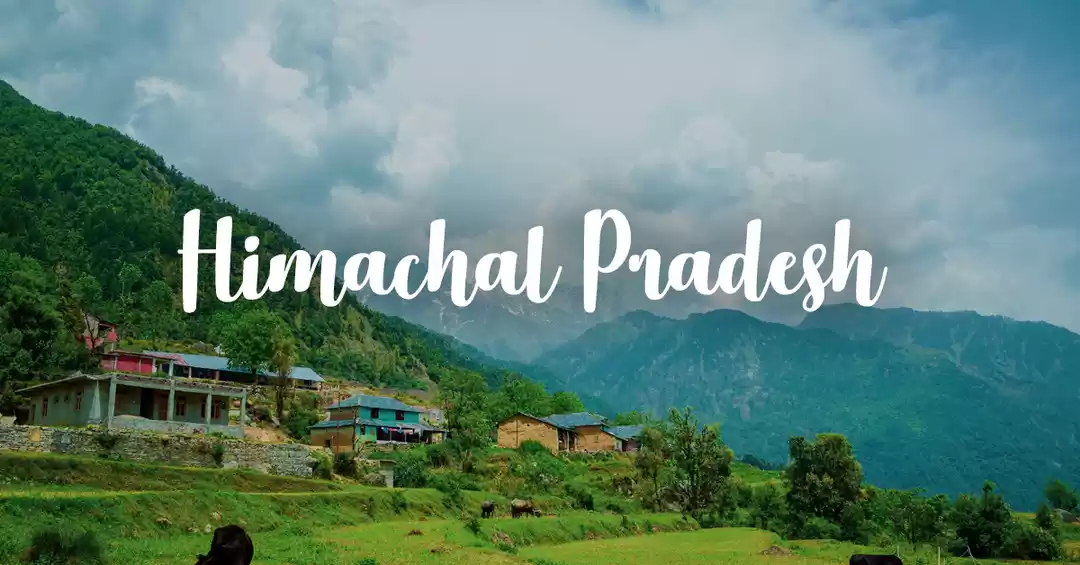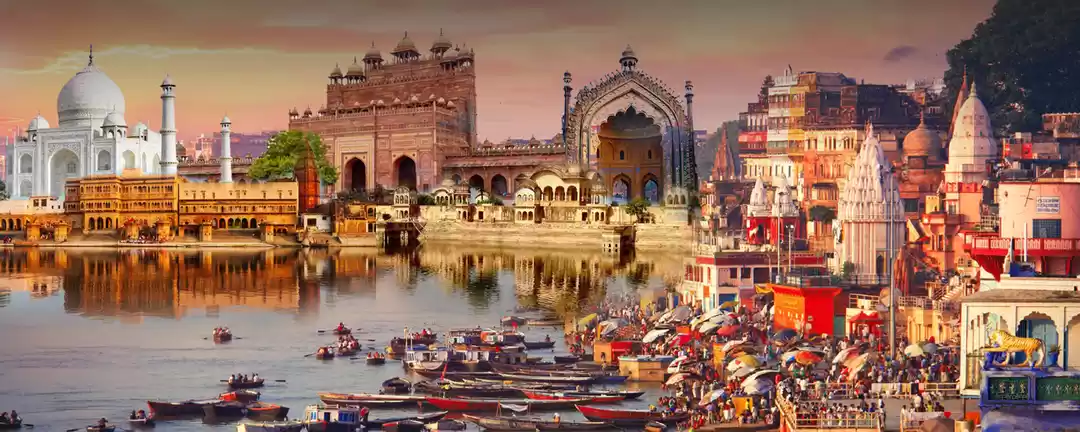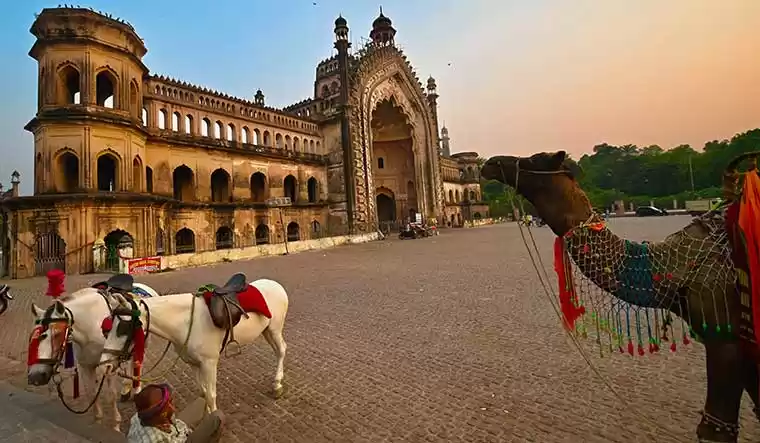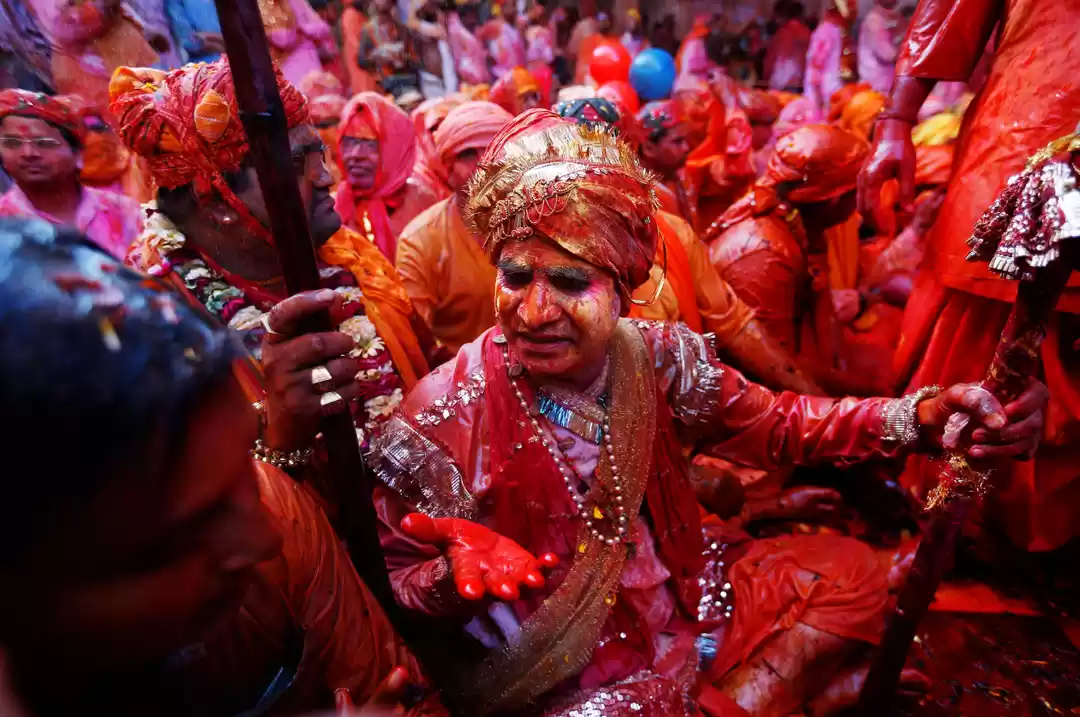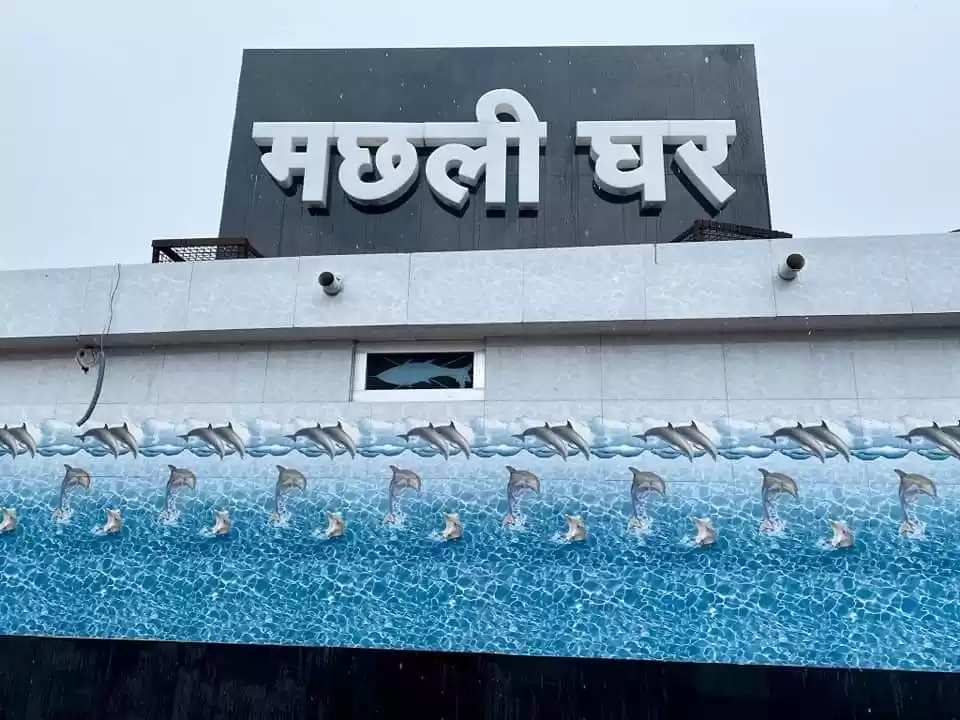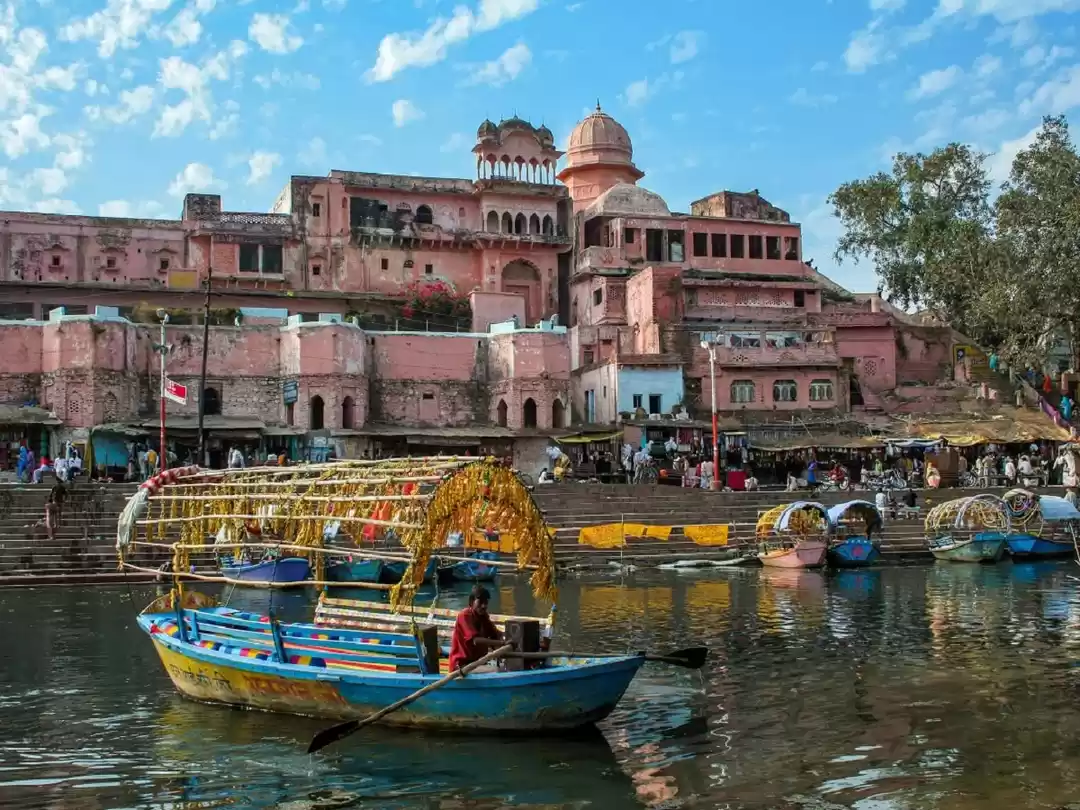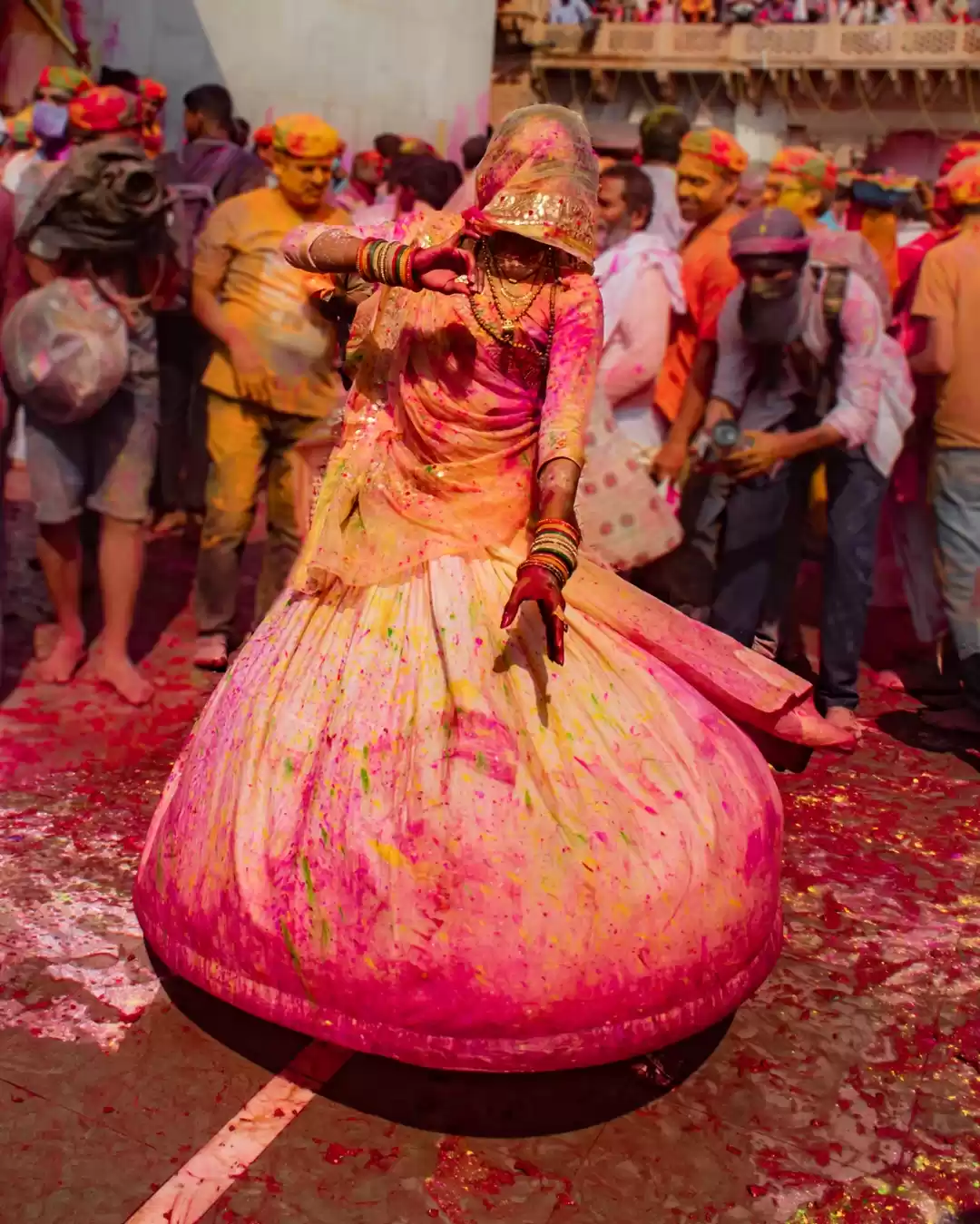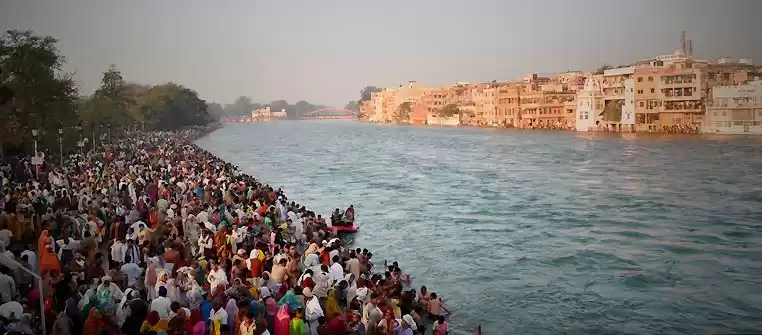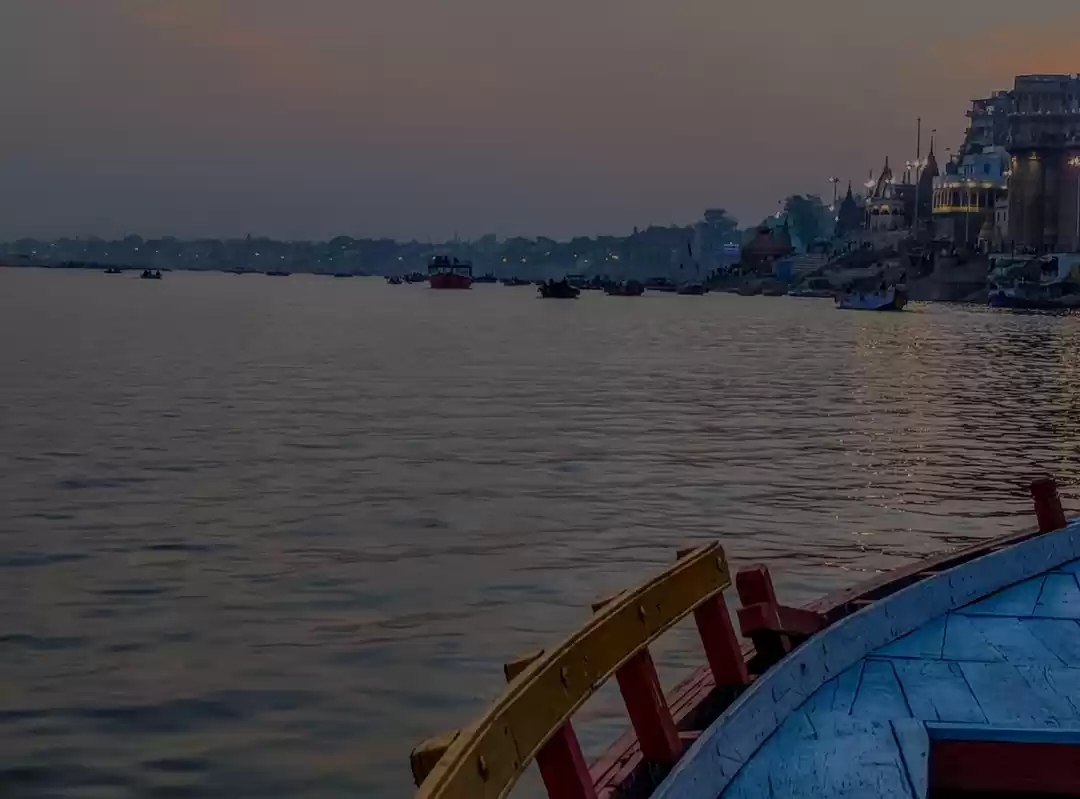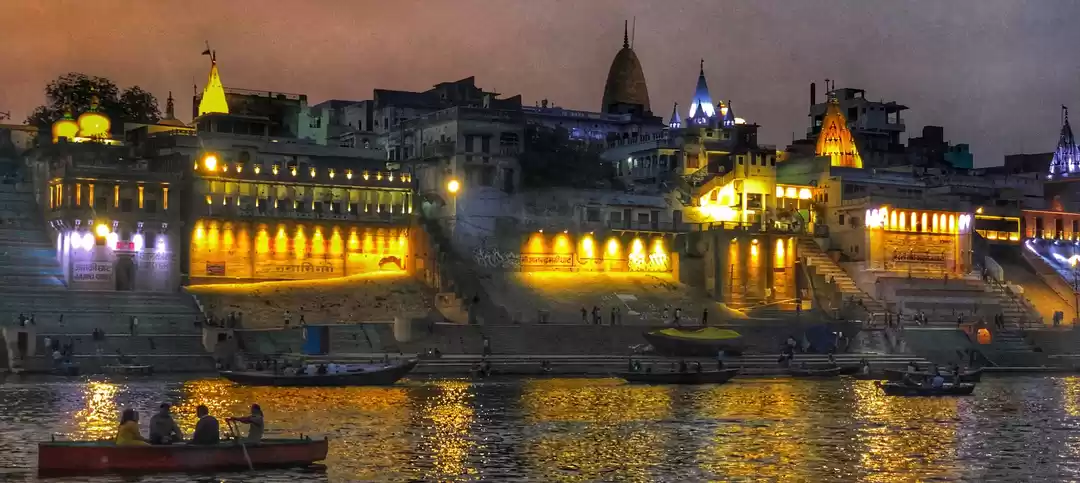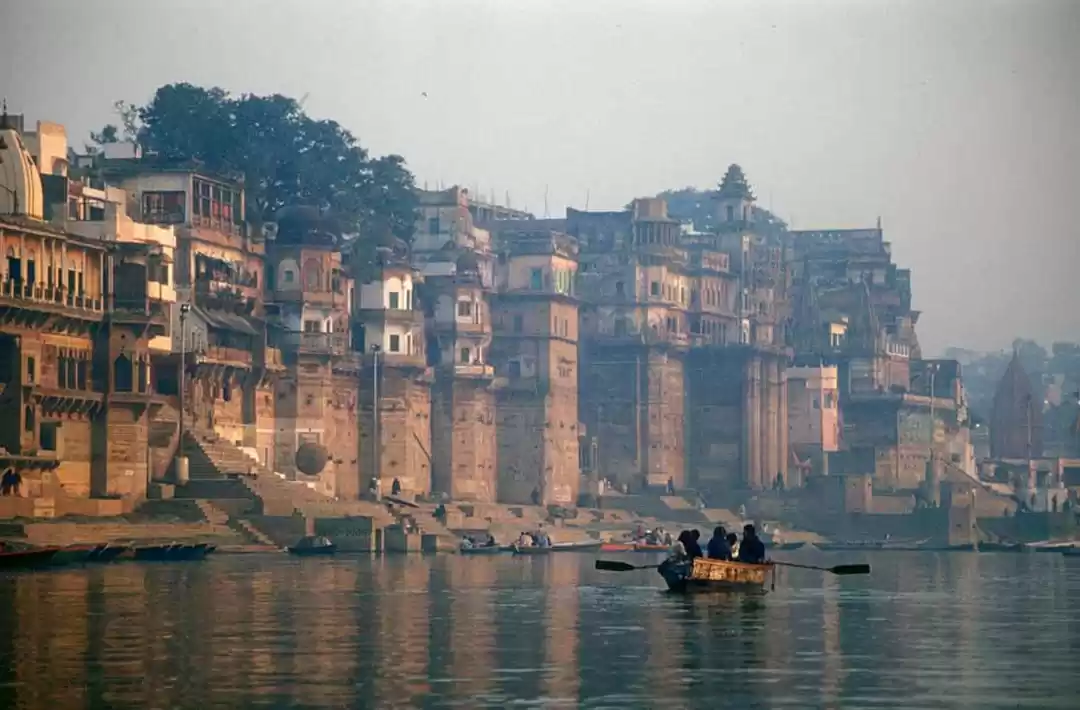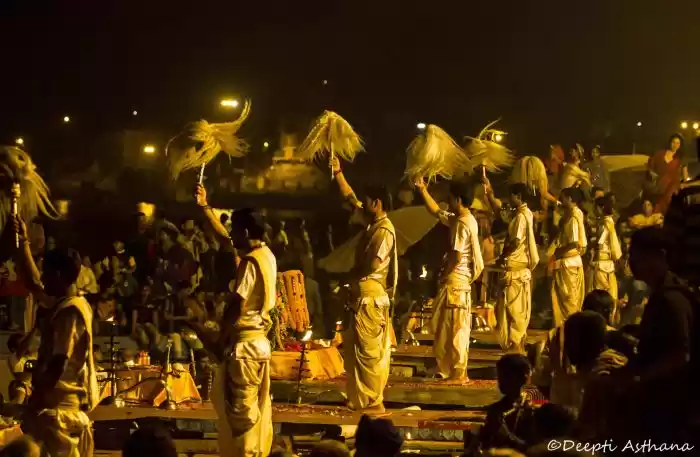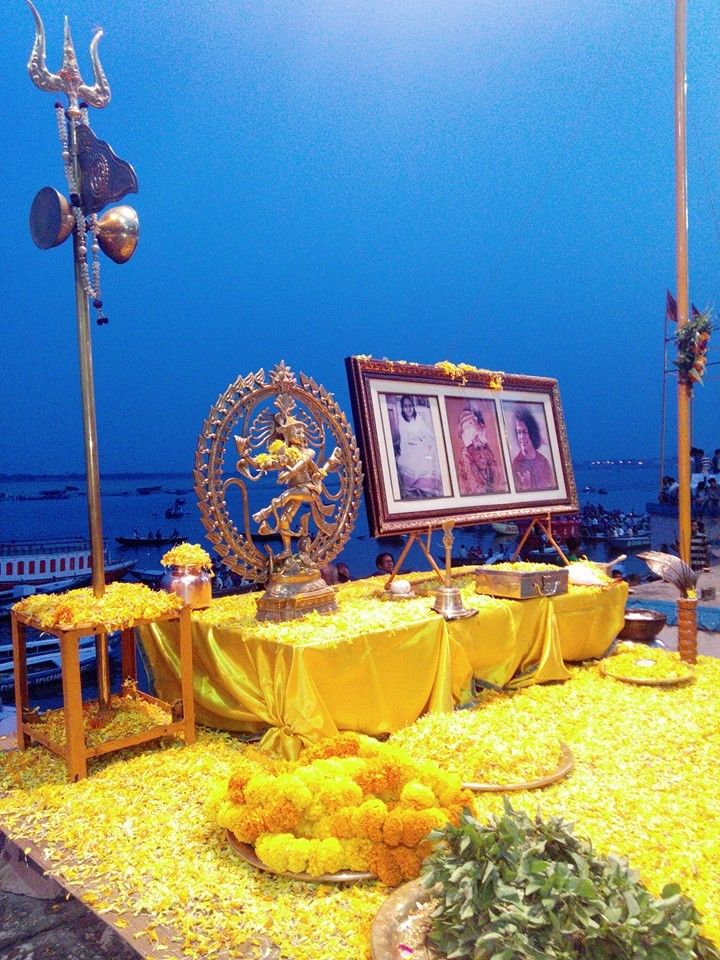
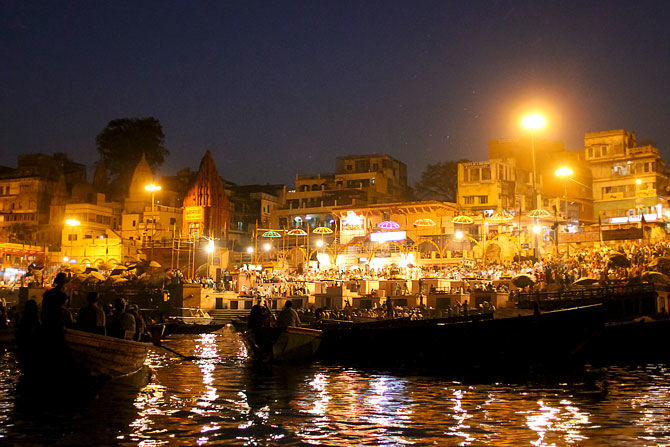
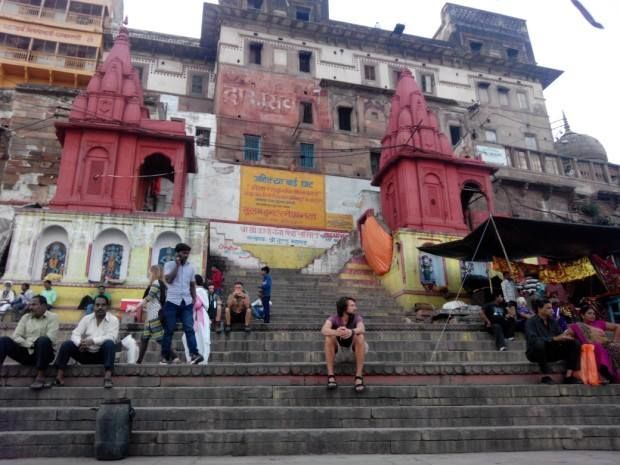
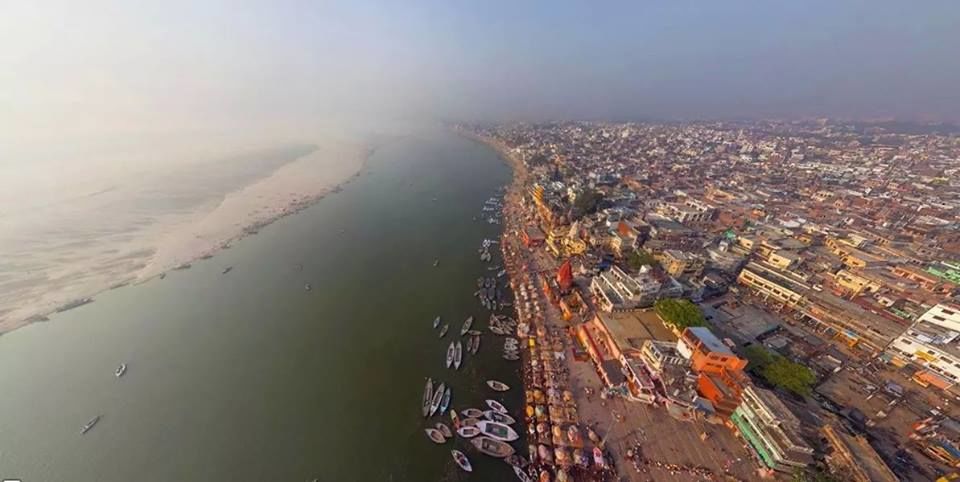
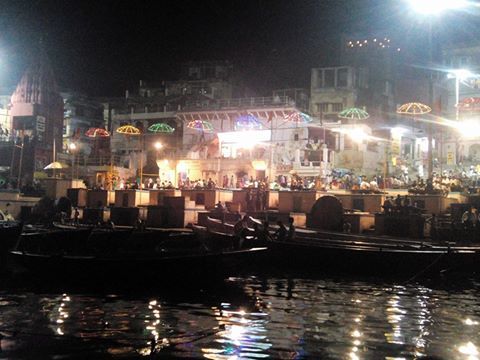

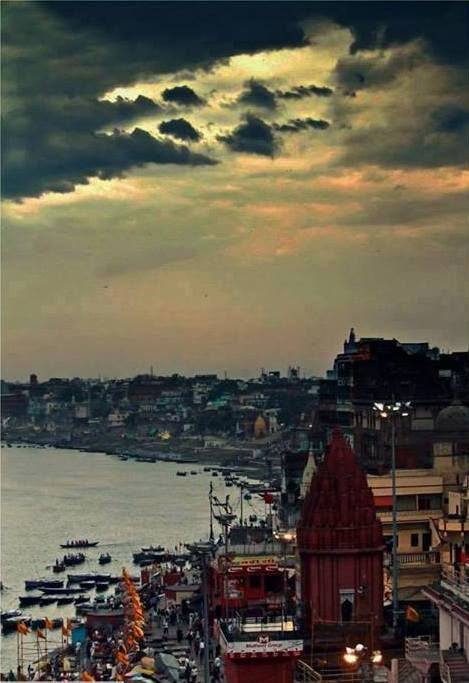

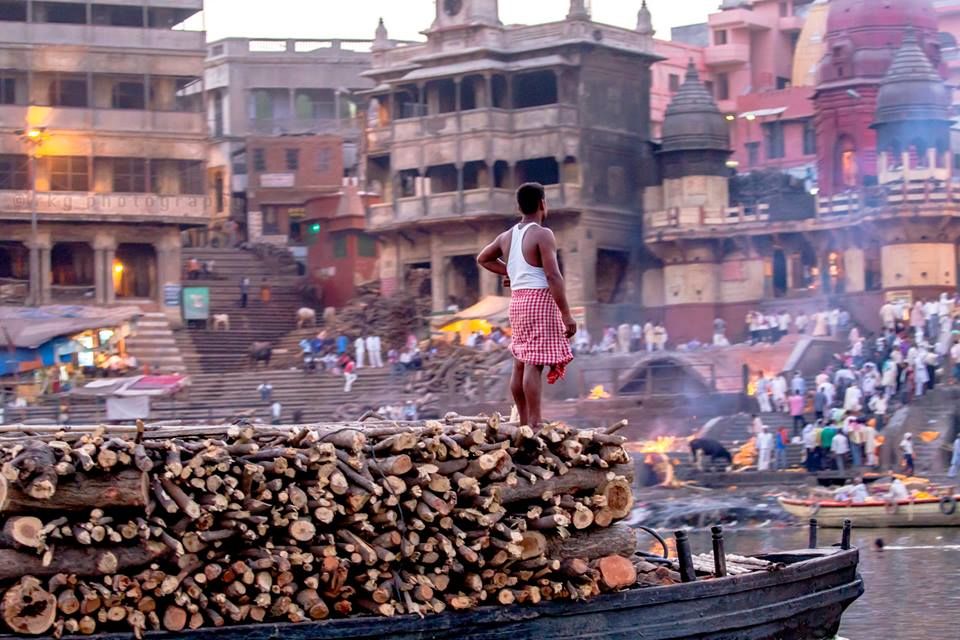
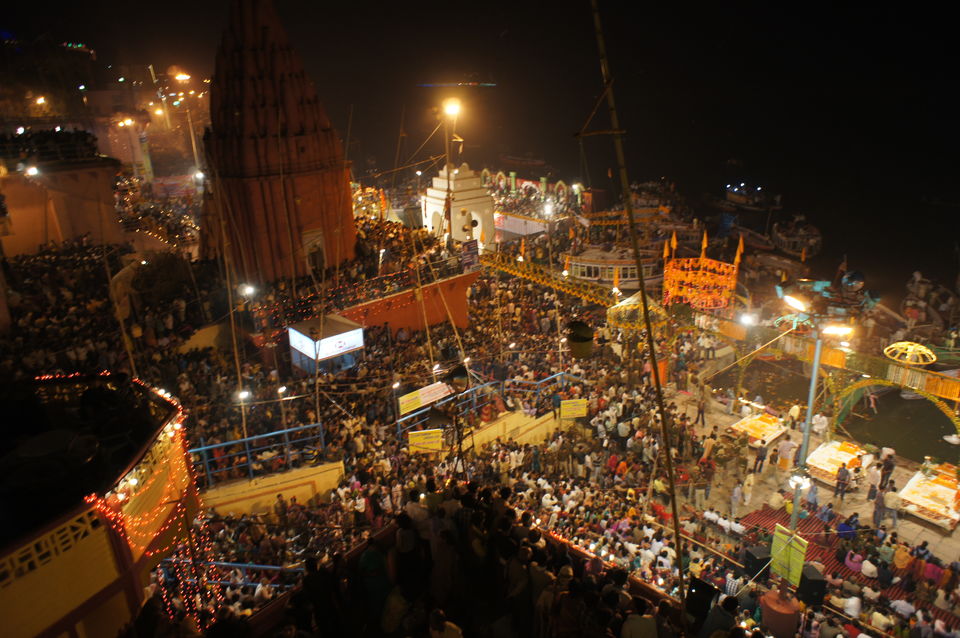
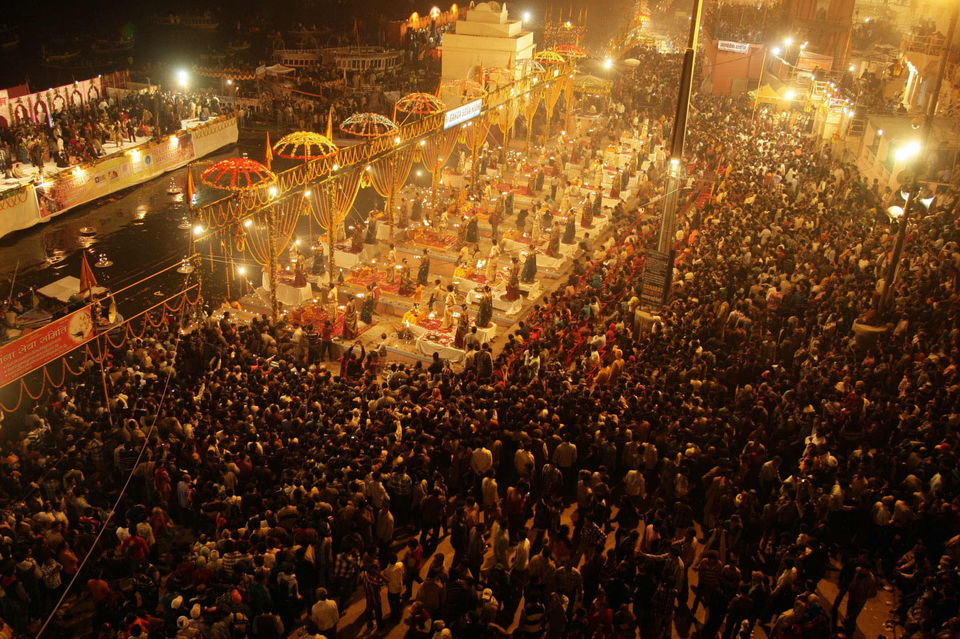
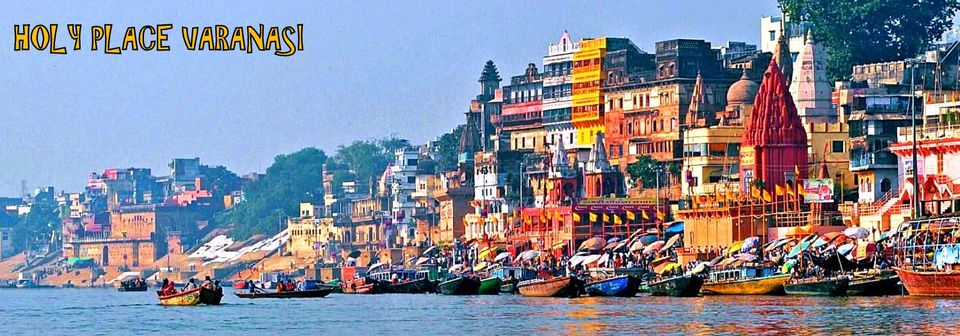
Varanasi: an auspicious place
For more than 2,500 years this city has attracted seekers and pilgrims. Its heart lies between the streams of the Varuna and the Assi which flow into the Ganges and give the city its name. This is the home of the god Shiva, who, to his devotees, is the one great God. To die here in his city on the banks of the holy river is to achieve moksha, liberation from the cycle of life and death. Death is not hidden in India. It is part of life, and one reason why you find cremation grounds in the very centre of Varanasi, and cremation ghats lining the river.
It is not uncommon to see muslin-wrapped bodies being carried through town and down to the river, placed on a funeral pyre and cremated in full public view. This unlimited access to the practical applications of the Hindu faith, the raw intimacy with death and the stifling intensity of the narrow lanes that lead down to the holy river often combine to leave visitors literally breathless, emotionally overcome but never unmoved, or unimpressed. Perhaps nowhere else in India can offer the visitor such an explicit crash course in the tenets of Hinduism; a visit to Varanasi goes a long way in helping to explain sights and sounds you might encounter elsewhere in India.






